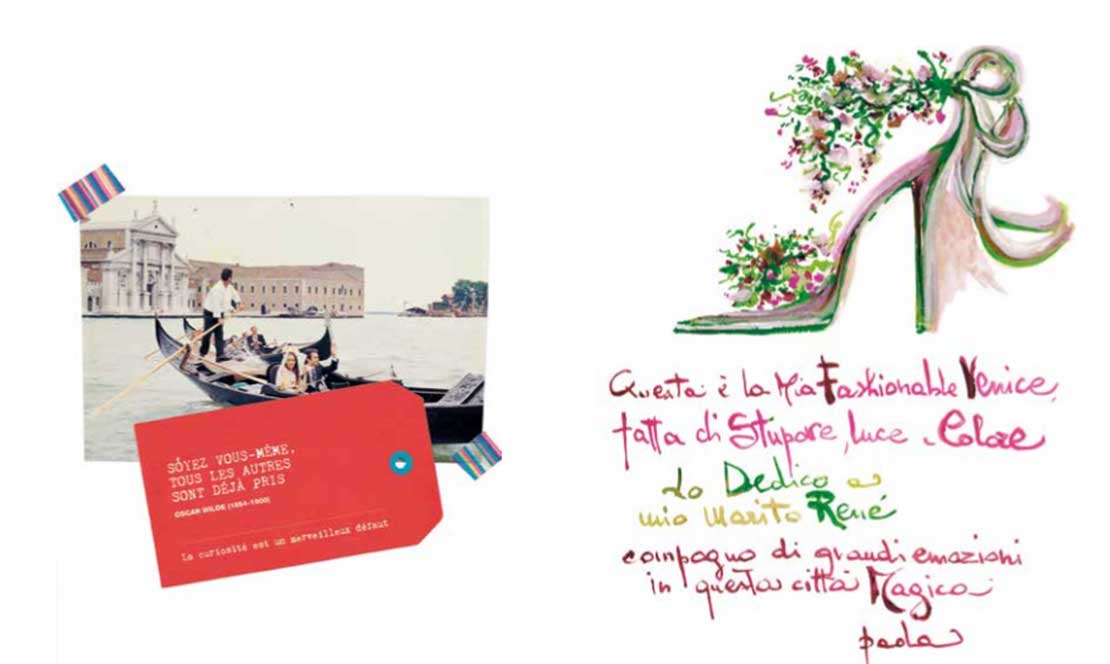Like Mozart’s music, Venice has the ability to arouse, and especially to indulge, the states of the most diverse and opposite feelings. If the Rialto market is an “allegro vivace,” a foggy sunset on the Giudecca is an “adagio cantabile.” Admire it while listening to the Clarinet Concerto, and you will be unable to hold back the tears. But fortunately the finales of concertos are always radiant and lively. And so is the book by Paola Caovilla. There are many guidebooks about Venice. Those that make you love it are few, and besides, a city is loved by living in it, and not by reading about its history or geography. They generally have in common a pedagogical and didactic attitude that tends to direct the visitor according to some preordained scheme. The result is a frequent sense of annoyance and boredom, because the reader feels they lacks the “dominant” of the concerto: that harmonious chord that gives unity to the composition. After being sated with advice about itineraries, restaurants, museums, and shops, exhausted travelers will feel they are entering a city like any other. But it is not so. Because Venice is unique, and for better or for worse it eludes all rules and clichés. This book will show it as no one else has done before. Its secret lies in the “souple et goguenard” spirit that animates it; a light-hearted and joyful vitality that reflects the sunny disposition of its author. This does not mean it is frivolous. Quite the opposite: it expresses that exuberant and fruitful energy that made Venice, for centuries, the most vibrant and multicultural city in the Western world. It was a wise choice. Although the current atmosphere evokes nationalistic selfishness, or perhaps because of it, Paola regales a breath of cosmopolitan brio, made even more delightful, and therefore more effective, by the alternation of original hints and evocative images. Avoiding the clichés that plague readers with their wearisome repetitiveness, Paola guides us towards a more lenient and benign view of life, which is essentially more realistic. Let’s face it: we have had enough of Casanova’s lovers and Thomas Mann sickly characters. “La débauche et la morte,” the “deux aimables filles” dear to Baudelaire, have no part in this book. They give way to the rowdy vitality of the bàcari (the little bars of Venice), the rippling of the water and the colors of the islands, a hidden curiosity for unknown corners, the refinements of fashion and temptations of cuisine. Even the places of art and cultural events, which Venice is rich in, though not sufficiently proud of them, are recalled with a gentle invitation, without the severe and even grim self-importance that often repels the timid neophyte. This, too, is the right reaction, because art should be approached with a simple heart, free from didactic intellectualism and elitist snobbery, perhaps taking a cue from ordinary and humdrum situations. Look carefully at the images of the squero (boatyard) of San Trovaso: there is no better way to prepare yourself to appreciate our modern painters, from Tito to Nono, Favretto and Zandomenghi, whose work you will then find in the museums and, if you have the good fortune to enter them, the Venetian palazzi. Finally, the author’s last sage piece of advice: the best way to see Venice is to lose yourself in it. It’s true: by trusting to chance and instinct, “en flanant,” roaming aimlessly, you will capture the life and spirit of this unique corner of the world. Without regretting past glories and without illusions about the uncertain future, you will relish the charm of its mutable inactivity, and in the end reflect happily over a flask of wine on the vagaries of life. Carlo Nordio

Tags:
Categories: